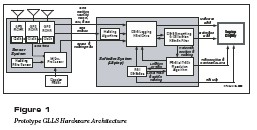|
High Speed Rail IDEA Project 35 [Completed (IDEA)]
Prototype HSR Accurate Low-Cost GPS Locomotive Location System
| Project Data |
| Funds: |
$94,706 |
| Staff Responsibility: |
Chuck Taylor |
| Completion Date: |
9/1/2003 |
| Fiscal Year: |
2001 |
|
There is growing interest and activity among railroads, suppliers, and government agencies in the development of communications-based train control systems. These systems rely on sophisticated computers on board locomotives and at train control centers, combined with train location and navigation systems, and digital data communications links for the control of train operations. They have the potential to dramatically increase the utilization of railroad track and equipment and improve safety and service reliability. These systems would replace the conventional track-circuit-based signal systems and thereby allow safe operations with much shorter headways between trains to improve system throughput and increase track capacity. In addition, they would also enable the monitoring of train crews for compliance with computer-generated train movement authorities using the on-board computers, and enforce compliance with automatic brake applications if these authorities are violated.
A key component of such systems is the locomotive navigation system. In order for the computer system to determine whether the train is in compliance with movement authorities, precise, real-time train location data are required, including identification of which track the train is on. GPS or DGPS alone does not provide the accuracy required, as trains often operate in multiple-track territory with track centers as close as 11.5 feet. Accordingly, there is a need for a low-cost alternative to conventional rate gyros or laser fiber optic gyros for precise navigation.
The objective of this project was to investigate the use of a three-receiver, three-antenna GPS heading reference system, as illustrated in Figure 1. The system includes a low-cost, drift-free highly accurate navigation system hardware design and parallel-track resolution software. A prototype GPS attitude system, that was used to gather field test data, is shown in Figure 2. For robustness, the system is augmented with a low-cost heading gyro and the odometer output from the locomotive. Both the gyro and the odometer are dynamically calibrated by the GPS receiver system, when GPS satellite coverage is available. When GPS satellite coverage is temporarily interrupted, the calibrated gyro and odometer are used to augment the GPS-derived position, velocity, and heading. The parallel-track resolution software takes the train heading and path distance traveled and compares this to a rail database that identifies where turnouts are located. When the train passes through one of these turnouts, the algorithm determines the probability that the train has continued on the original track or has switched onto another track.

The final report for this IDEA project can be found at:
|
|